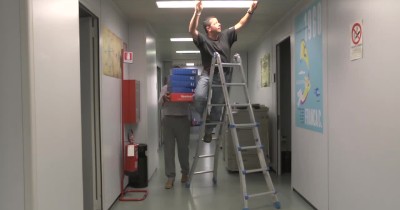How to manage interference risks
The realization of a work or the organization of a work activity in a company involves the design and execution of a series of different processes even at the same time. The coexistence within the same work context and at the same time of different types of risk is called “interference risk“.
This situation can be found both within a workplace and within a construction site.
In the workplace, interference is represented by the coexistence of the work activity of employees and that of companies involved in the maintenance of materials and equipment, cleaning of premises, etc.
Within a construction site it is possible that hydraulic activities, activities aimed at creating an electrical system or masonry activities are designed and implemented.
What does the jurisdiction say about the risks of interference?
The jurisprudence of the Supreme Court has helped to define the concept of interference and has identified it in a risky contact between the staff of the Client and that of the Contractor or between the staff or between different companies operating in the same company headquarters with different contracts.
If the carrying out of a job already involves the emergence of risks related to it, the coexistence of several activities on the construction site or in the workplace, at the same time and in the same room, entails the emergence of a greater risk.
This risk is not given by the sum of the risks created by each individual company involved in the work, but is given by their multiplication. This is why the risk of interference is a significant problem within a construction site or a workplace and requires an in-depth analysis of the causes and consequences deriving from it and the implementation of a precise procedure that can contain the probability of occurrence of damage deriving from the interaction of the different risks present.
The area in which the risk of interference is found, therefore, is that of the contract or the administration of work or in any case in all situations in which the client entrusts a company or a self-employed worker for the realization of a work activity.
The existence of interference risks entails the attribution of specific obligations to the Principal.
Article 26 co. 2 lett. b) of Legislative Decree 81/2008 provides for the duty of the client to “coordinate the protection and prevention measures from the risks to which workers are exposed, informing each other also in order to eliminate the risks due to interference between the work of the various companies involved in the execution of the overall work” (link).
The rationale of the rule, therefore, is to protect workers belonging to different companies and who find themselves interfering with each other for the performance of certain work activities and in the same workplace.
It is also the duty of the client to take action and promote information and cooperation paths, in order to create and prepare common solutions to complex problems, made such by the substantial extraneousness of the employees of the contractors to the work environment where they work
For these reasons, the client or employer must draw up the DUVRI: Single Document for the Assessment of Interference Risks.
The jurisprudence has also consistently recognized the obligation to draw up the DUVRI and has defined its content, which must refer to all preventive activities, carried out by all companies present in the workplace and which may contain and avoid “risky contacts”.
Therefore, even if the contractor’s staff operates autonomously within the contracting company’s place of work, it must be put in a position to know in advance the risks it may face in that workplace with reference to the work it must carry out. It should be noted that the obligation to make knowledge on the risks present available to the contractor’s staff is the responsibility of the contractor.
It is clear, therefore, the responsibility of the Customer in the analysis of interference risks and in the drafting of the DUVRI.
An exclusion of the liability of the contracting party is configurable only if the contractor is entrusted with the performance of works, even if determined and circumscribed, in full and absolute organizational and managerial autonomy with respect to the contractor.
Are you looking for experts in the field for the preparation of DUVRI? Let’s stay in touch!
Often the bureaucracy seems to be too complex: thanks to the help of a qualified team, it is possible to solve any doubts and find simple solutions to complex questions.
Safetyone Ingegneria Srl is the company that, for many years, has been operating in the field of occupational safety consultancy, supporting many companies in the qualification of suppliers, in the preparation of DUVRI and related procedures and in the management of interference risks, also with the help of the SafetyoneClick management platform.
To receive information related to safety in the workplace, you can rely on our professionalism.


